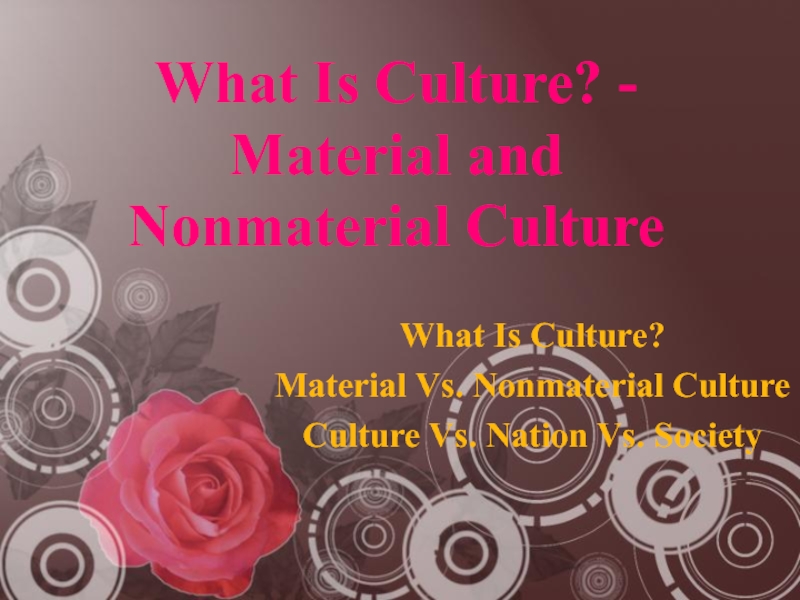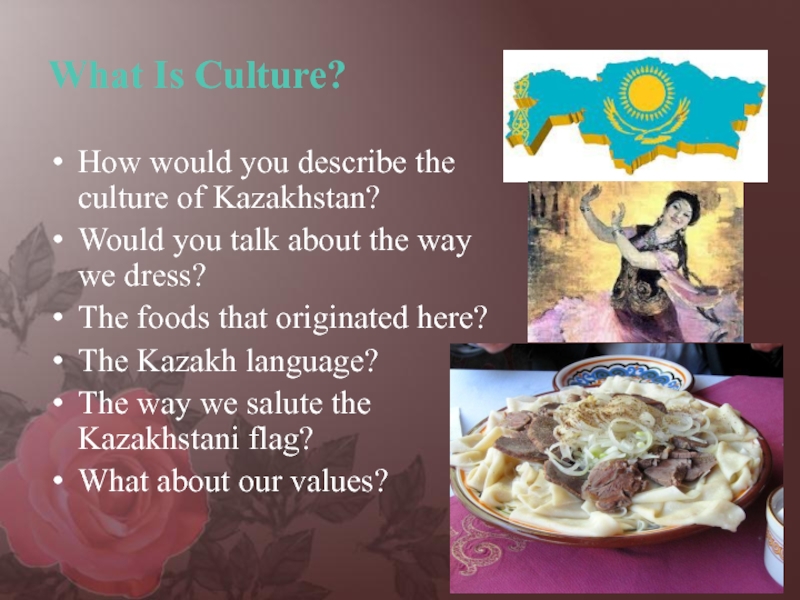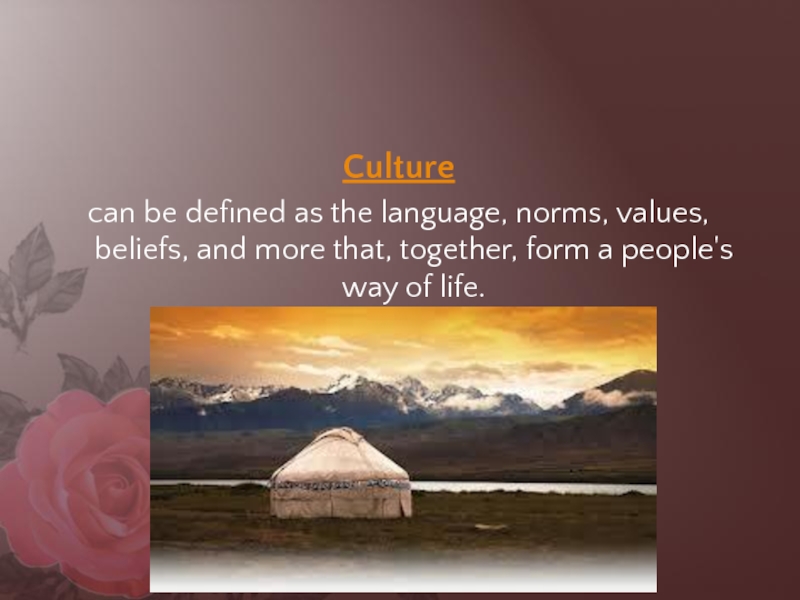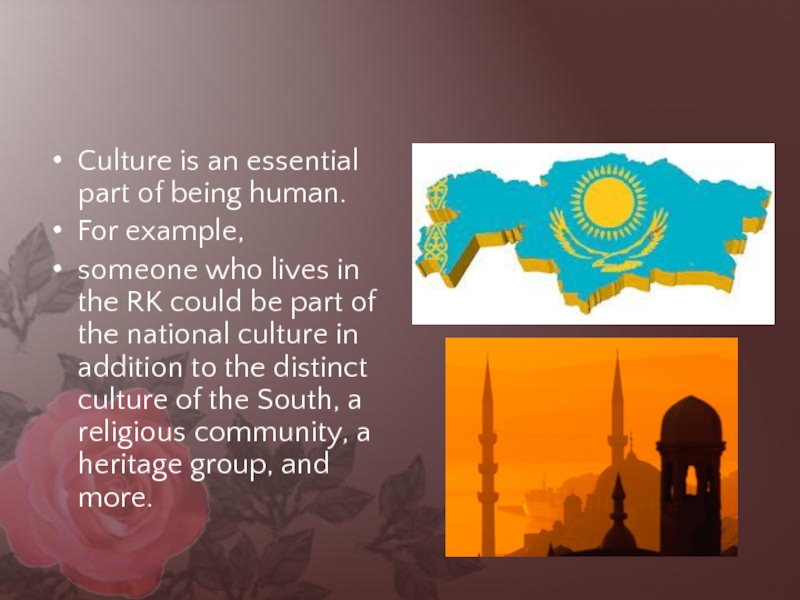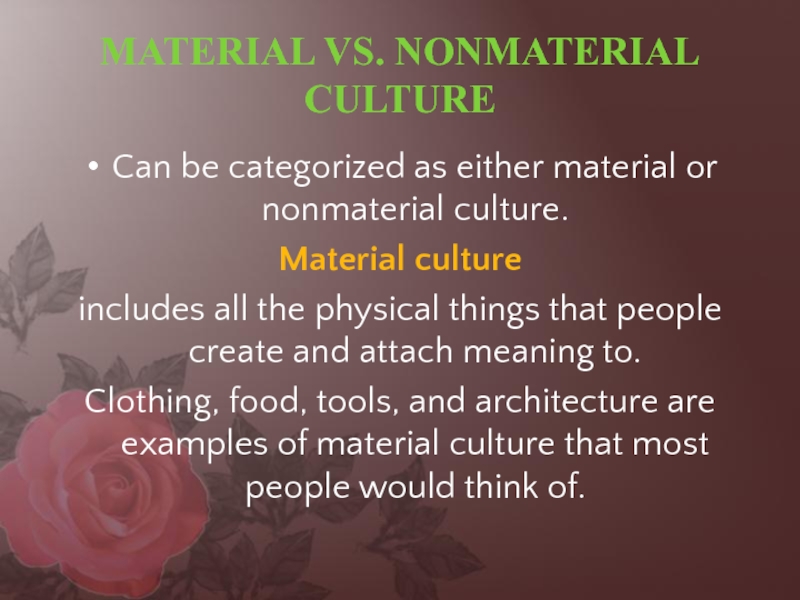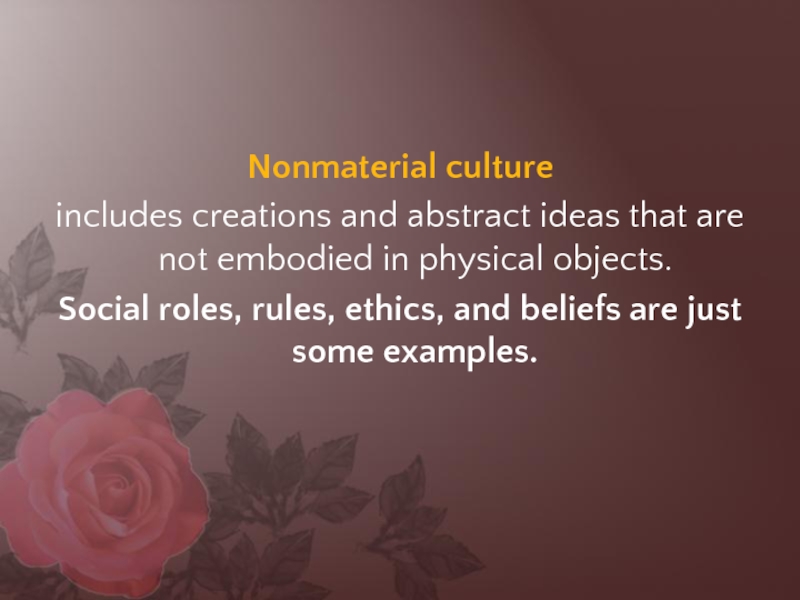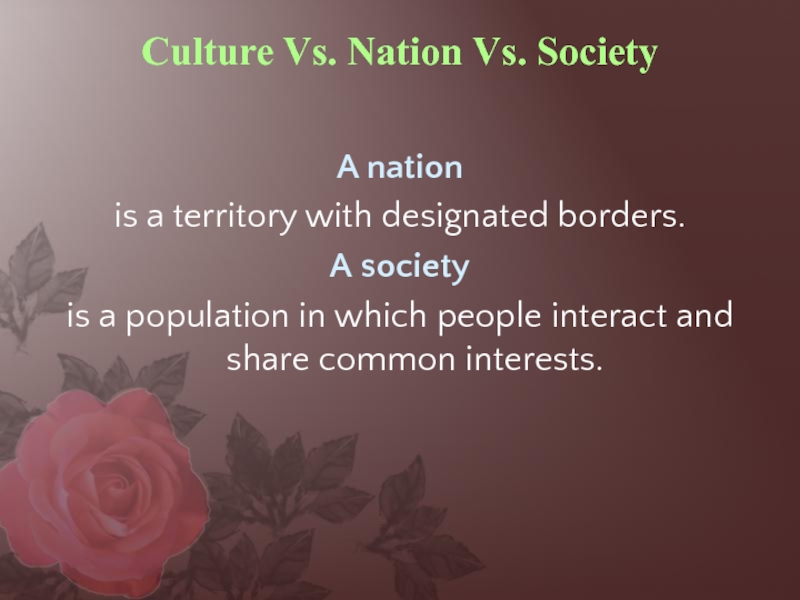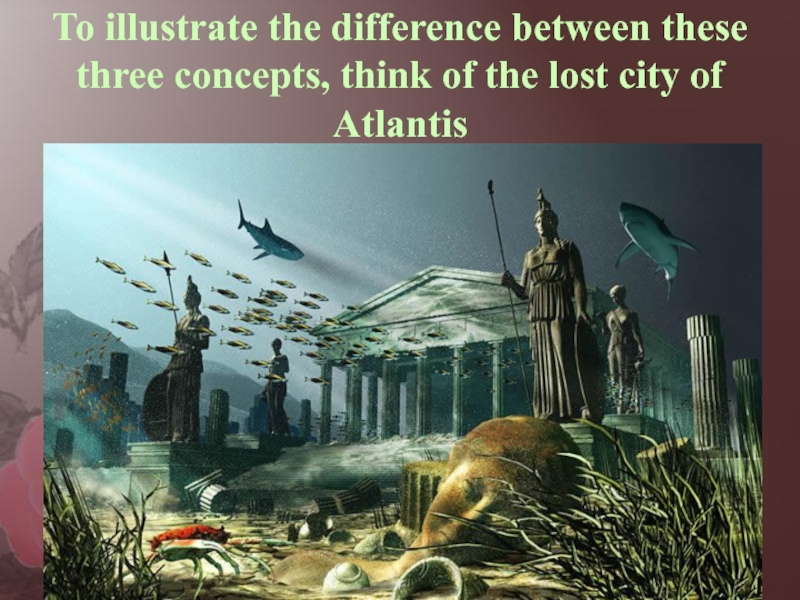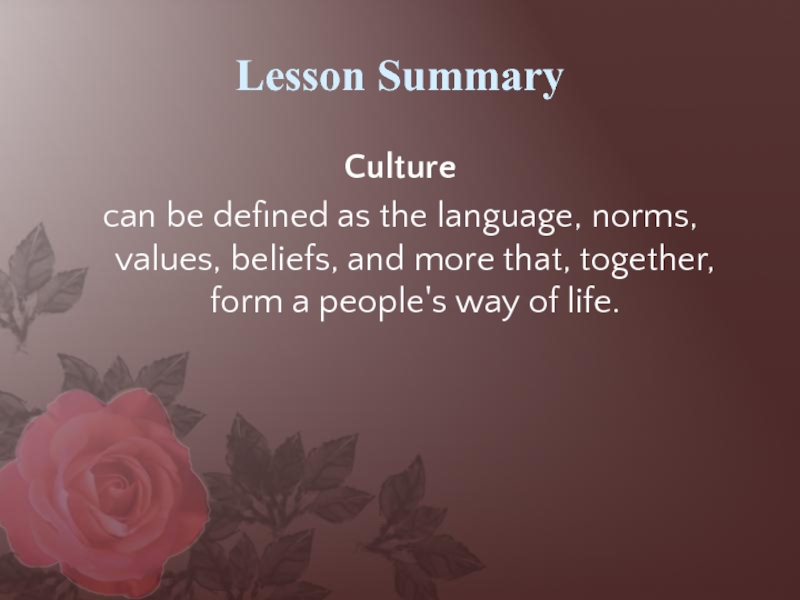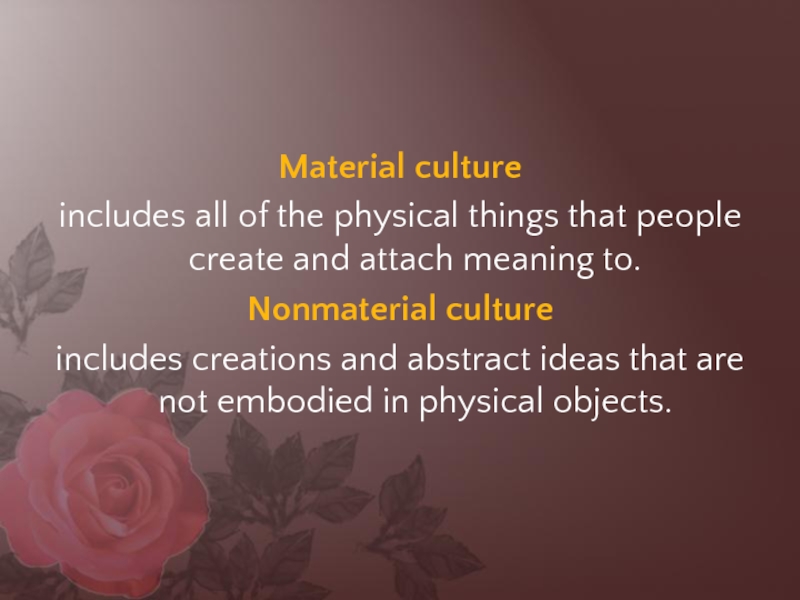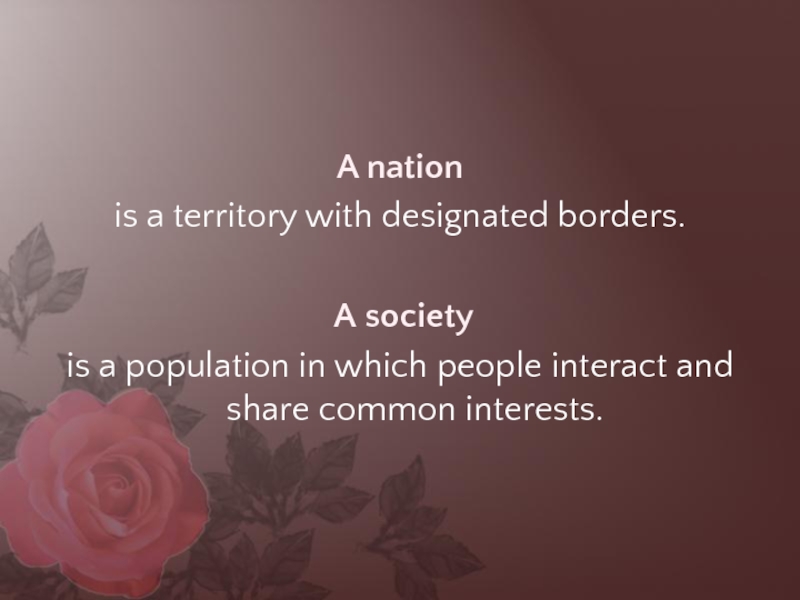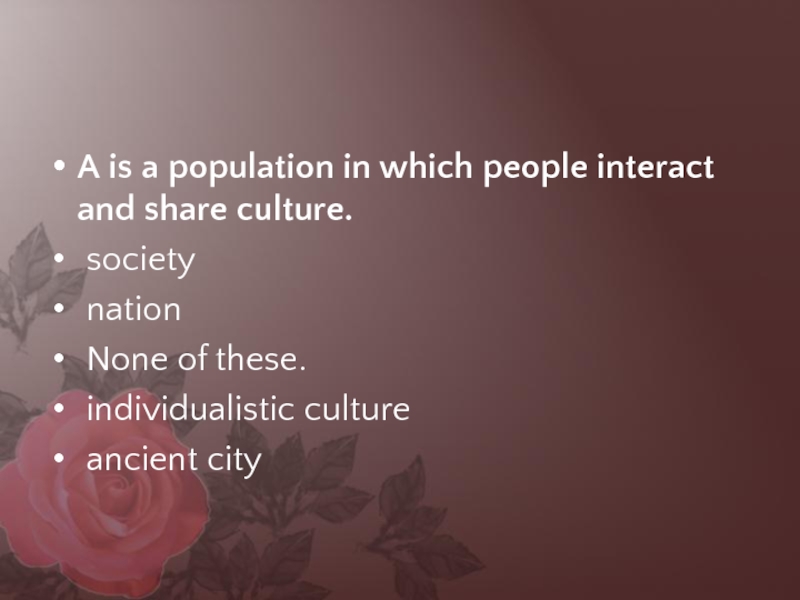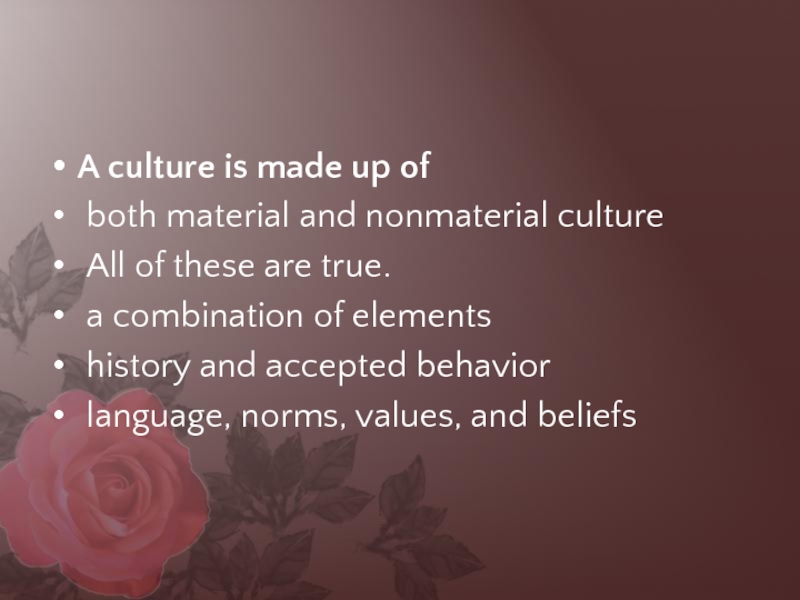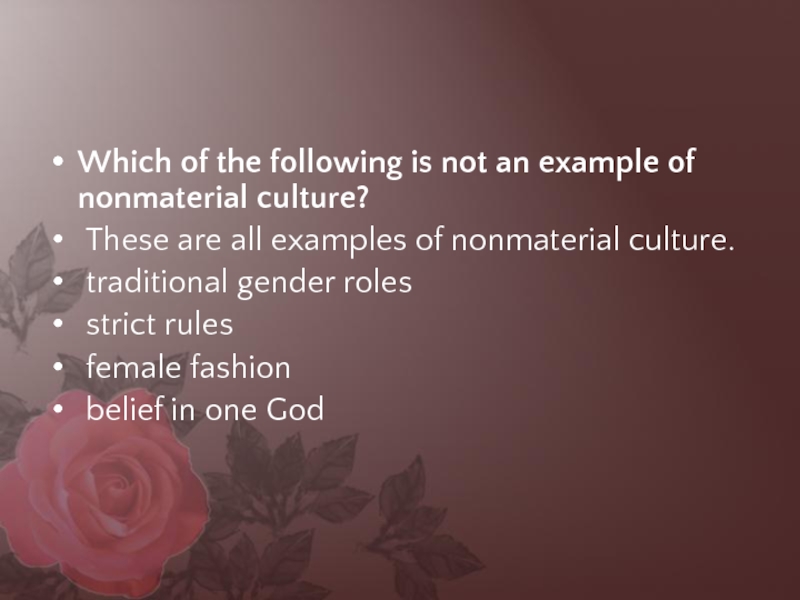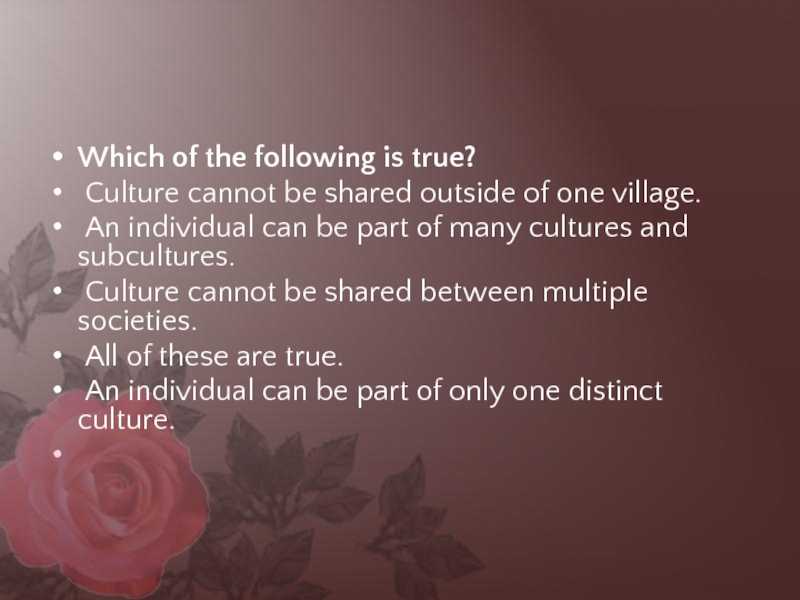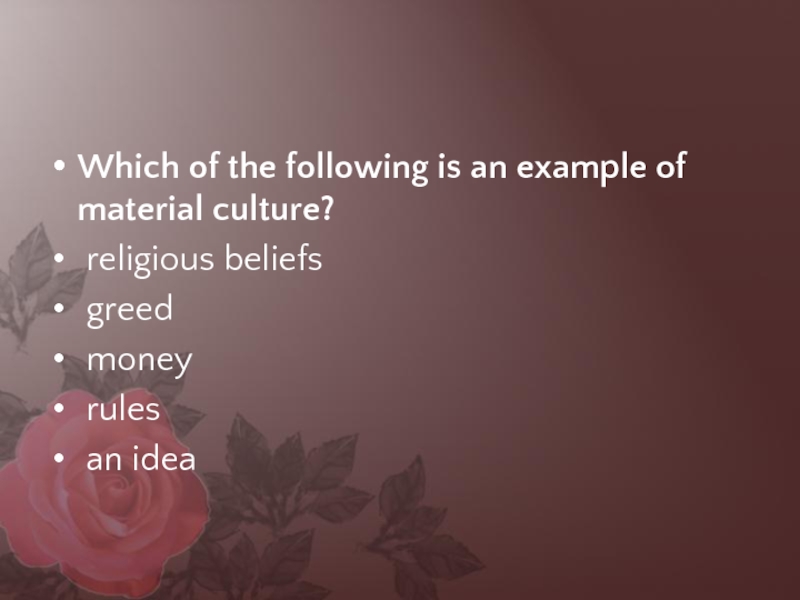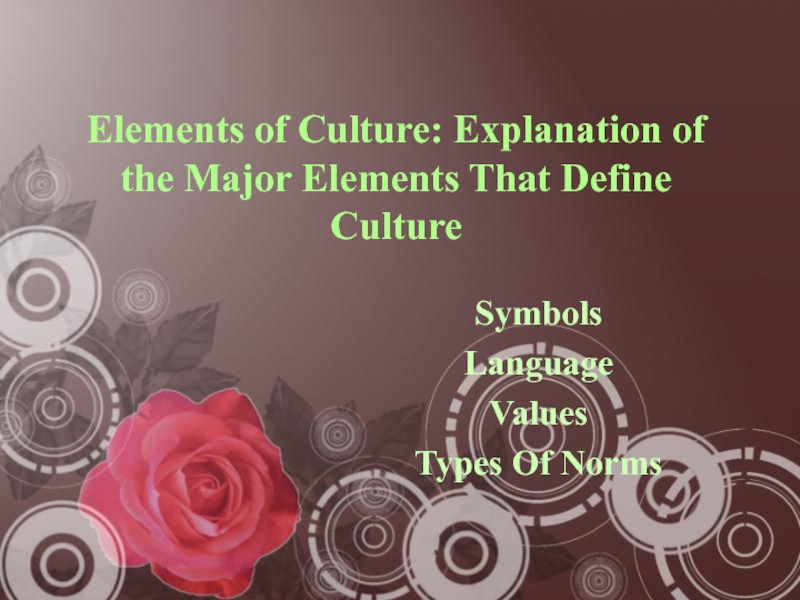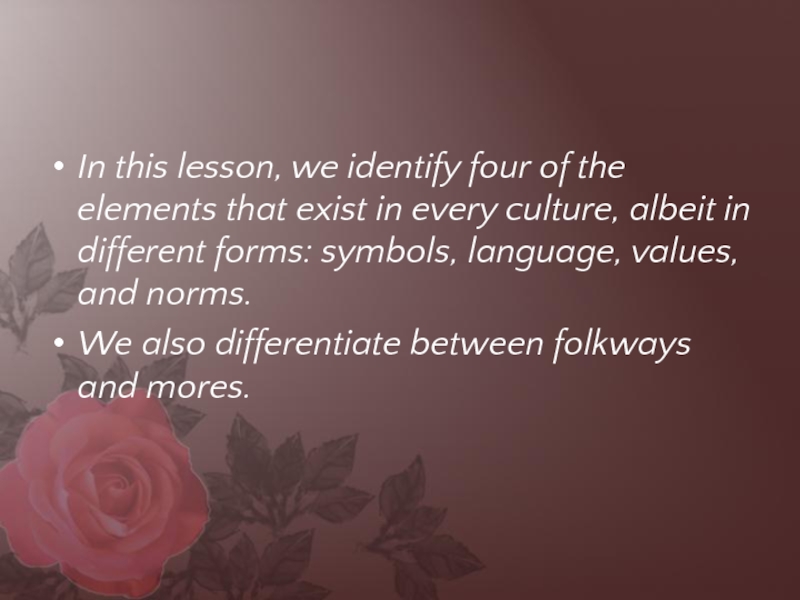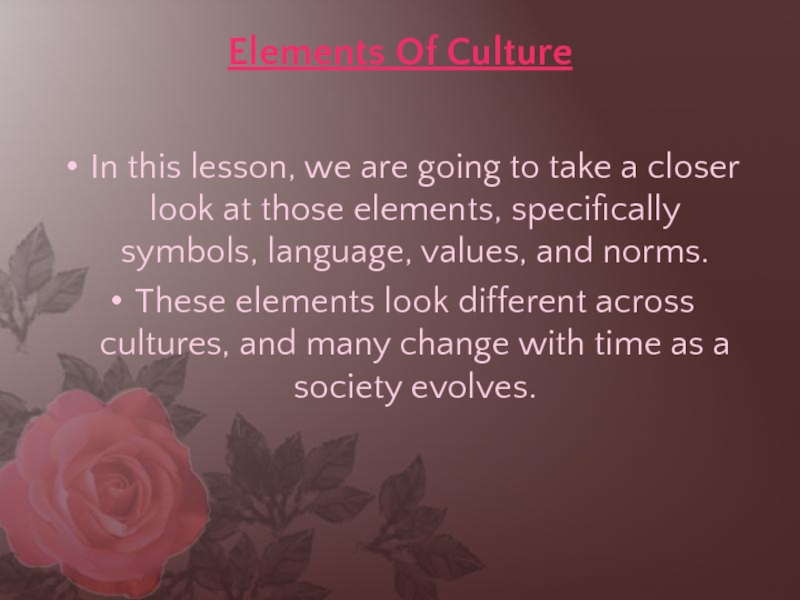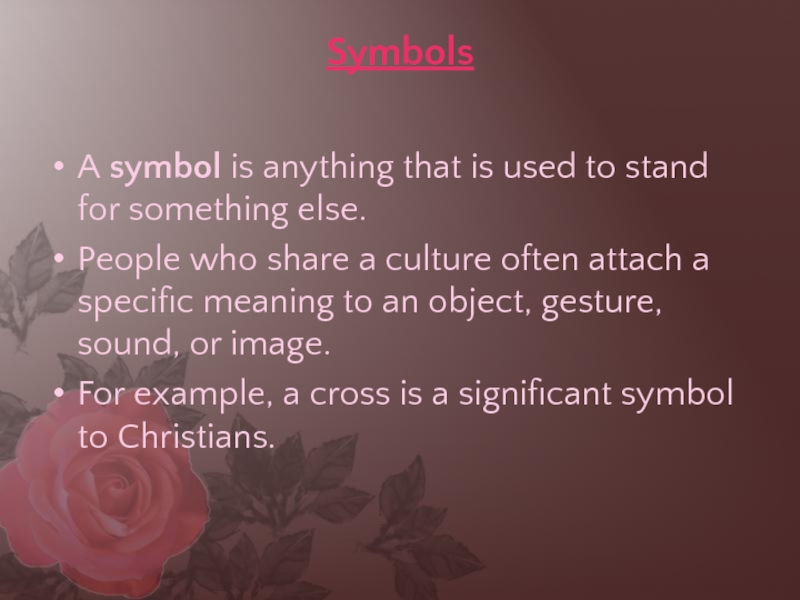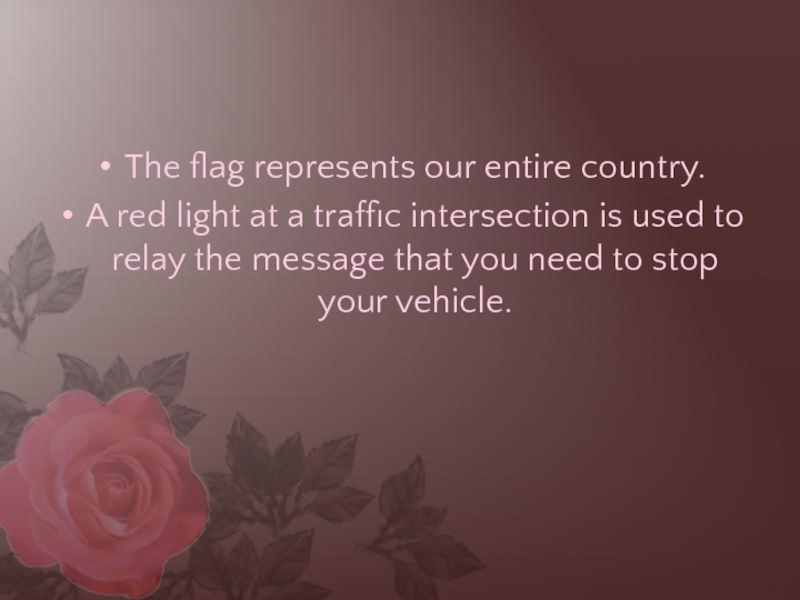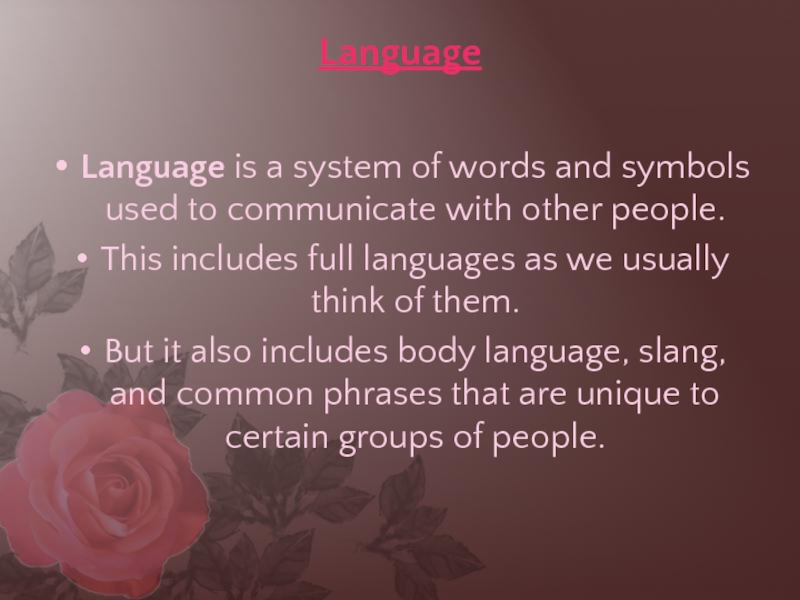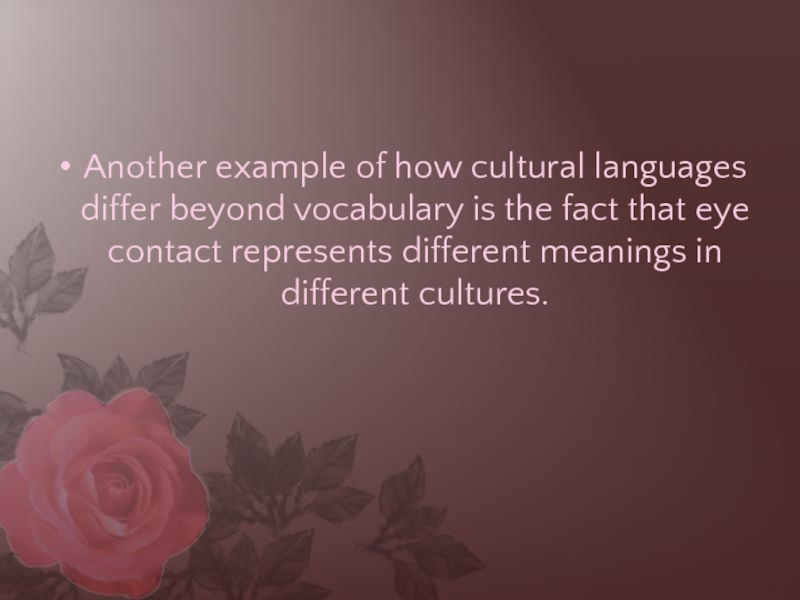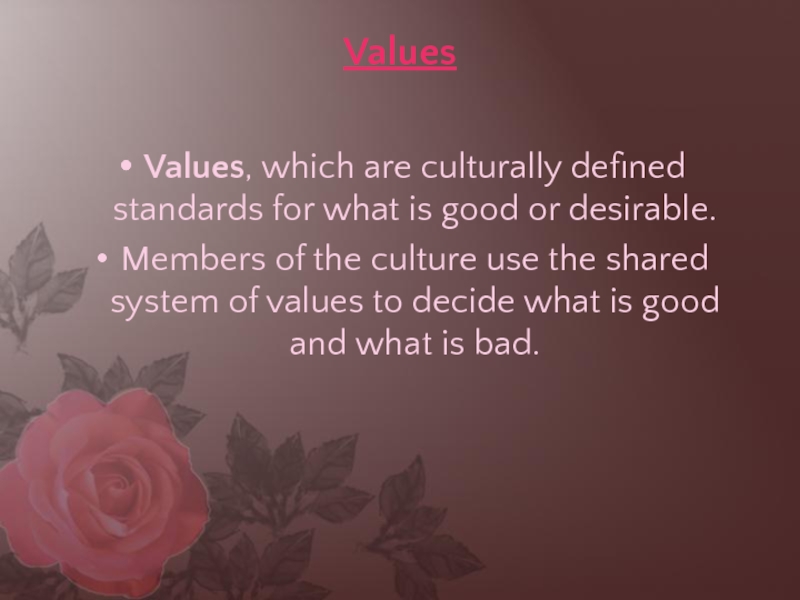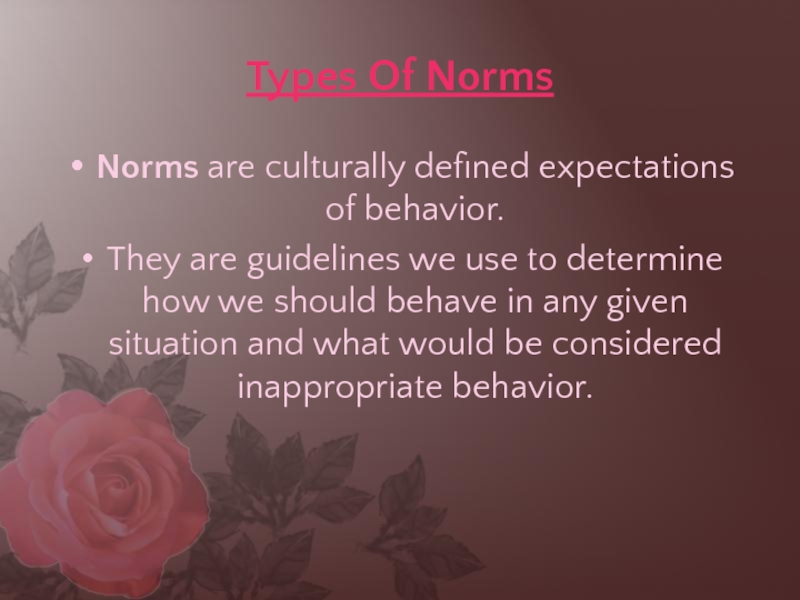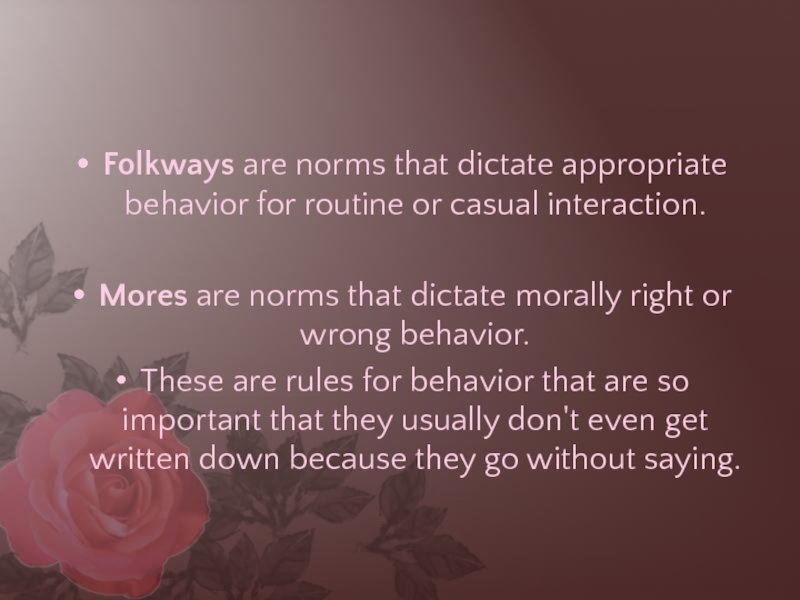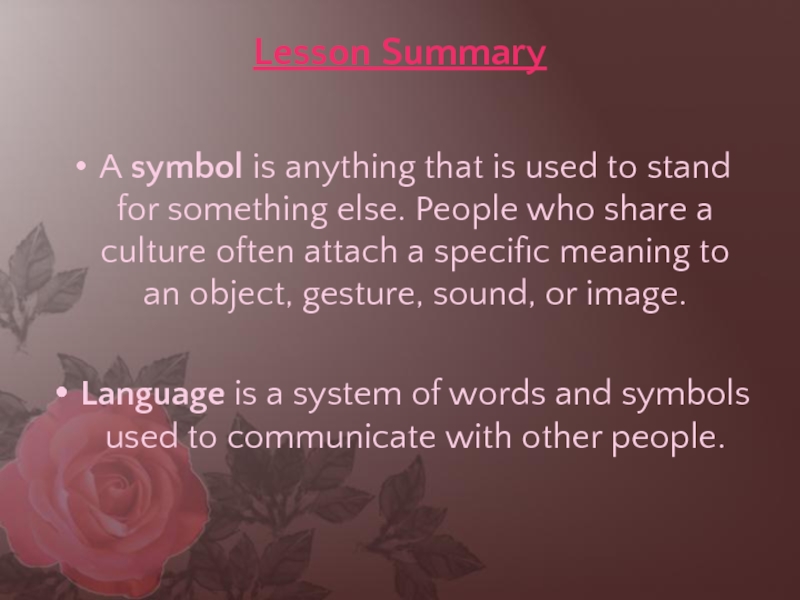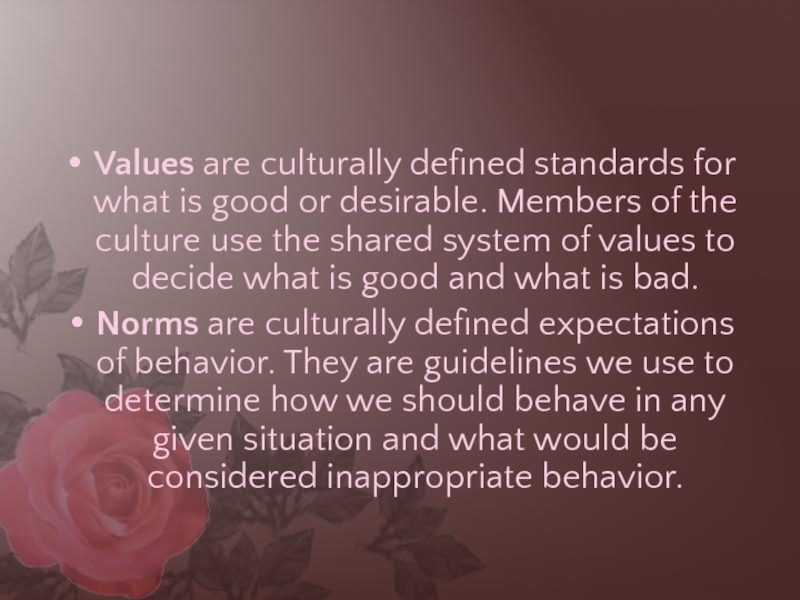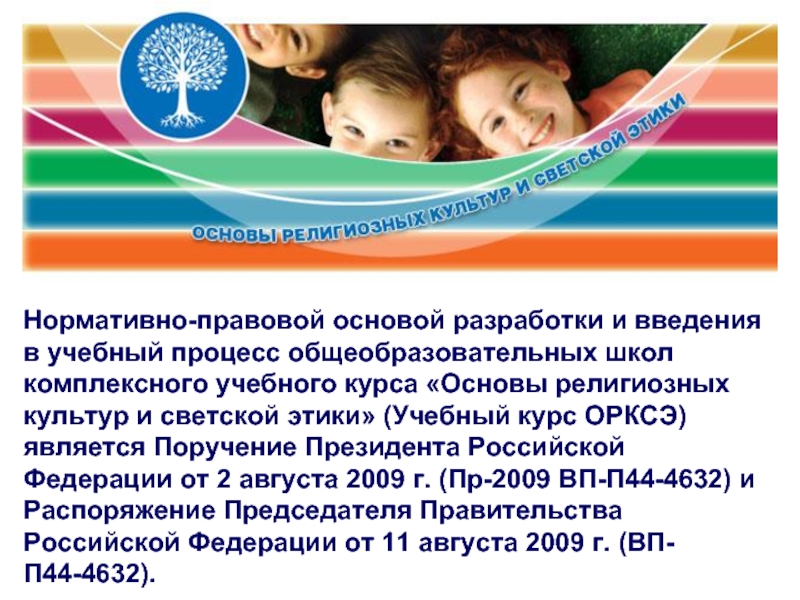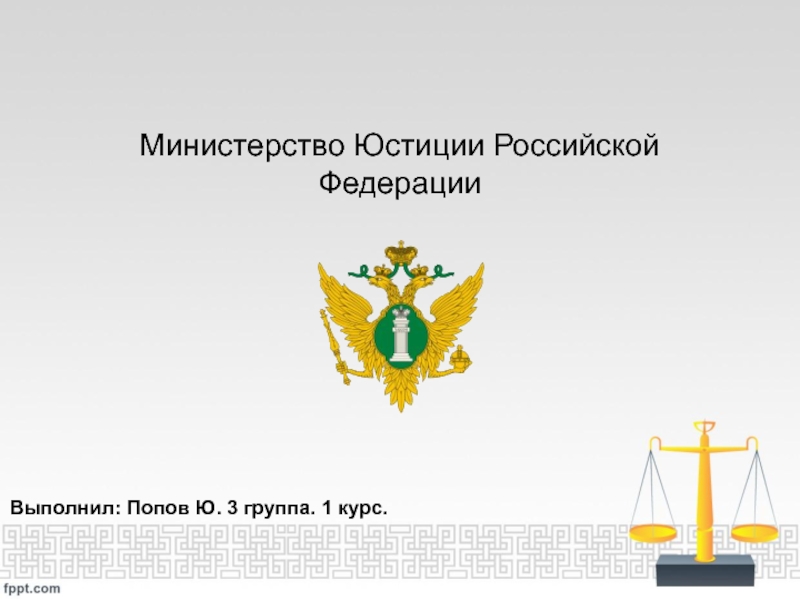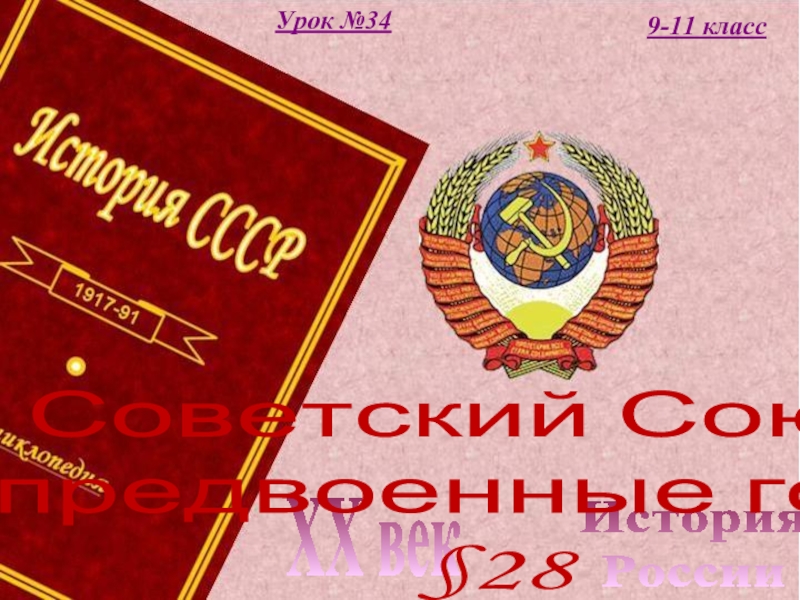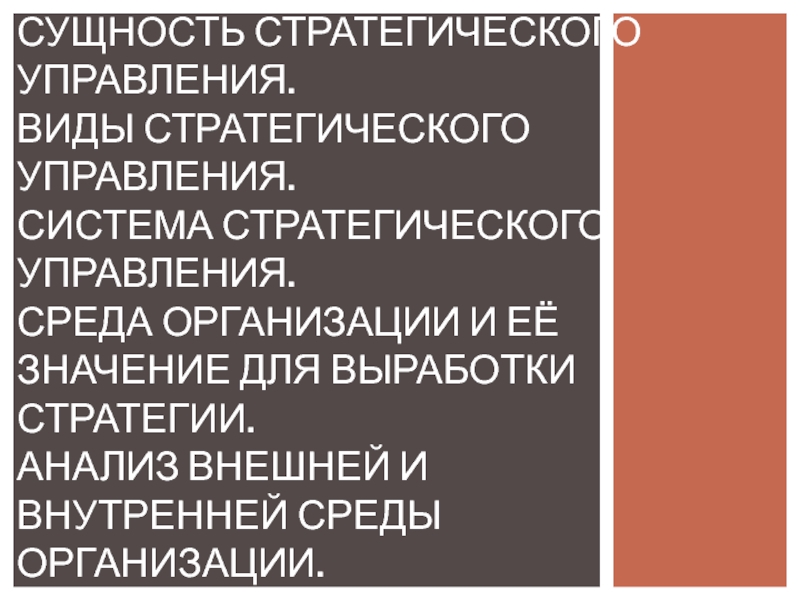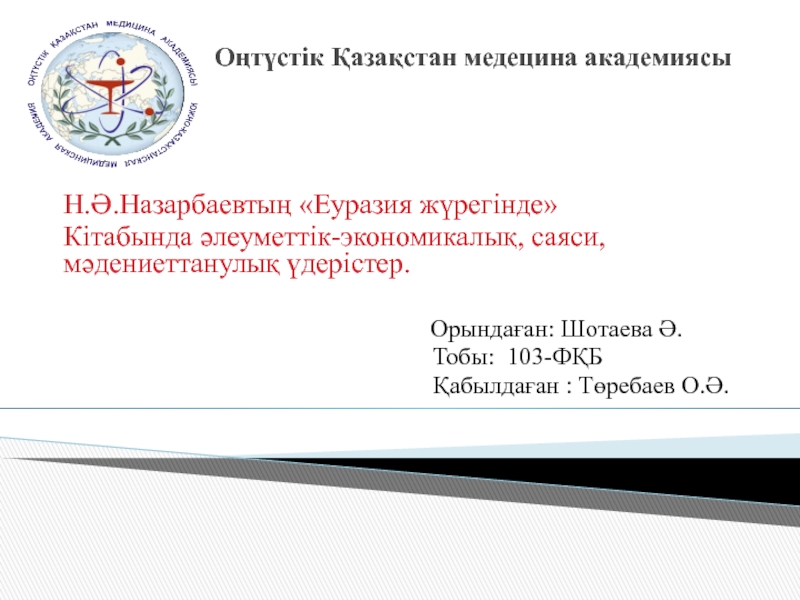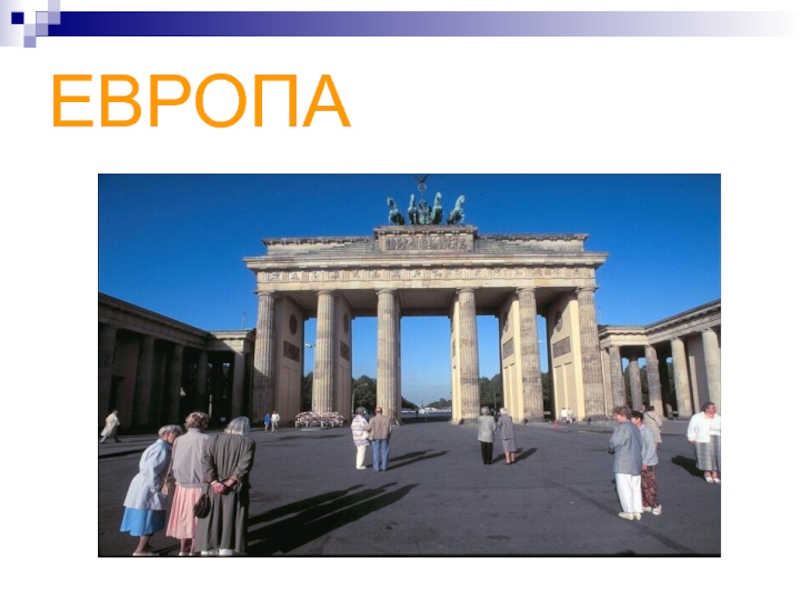Разделы презентаций
- Разное
- Английский язык
- Астрономия
- Алгебра
- Биология
- География
- Геометрия
- Детские презентации
- Информатика
- История
- Литература
- Математика
- Медицина
- Менеджмент
- Музыка
- МХК
- Немецкий язык
- ОБЖ
- Обществознание
- Окружающий мир
- Педагогика
- Русский язык
- Технология
- Физика
- Философия
- Химия
- Шаблоны, картинки для презентаций
- Экология
- Экономика
- Юриспруденция
What Is Culture? - Material and Nonmaterial Culture
Содержание
- 1. What Is Culture? - Material and Nonmaterial Culture
- 2. What Is Culture? How would you
- 3. Culture can be defined as the language, norms,
- 4. Culture is an essential part of being
- 5. Material Vs. Nonmaterial Culture Can be
- 6. Nonmaterial culture includes creations and abstract ideas that
- 7. Culture Vs. Nation Vs. Society A nation
- 8. To illustrate the difference between these three concepts, think of the lost city of Atlantis
- 9. Lesson SummaryCulture can be defined as the language,
- 10. Material culture includes all of the physical things
- 11. A nation is a territory with designated borders.
- 12. A is a population in which people interact and share culture. society nation None of these. individualistic culture ancient city
- 13. A culture is made up of both material
- 14. Which of the following is not an example of
- 15. Which of the following is true? Culture cannot
- 16. Which of the following is an example of material culture? religious beliefs greed money rules an idea
- 17. Elements of Culture: Explanation of the Major Elements That Define CultureSymbolsLanguageValuesTypes Of Norms
- 18. In this lesson, we identify four of
- 19. Elements Of Culture In this lesson, we
- 20. Symbols A symbol is anything that is used to
- 21. The flag represents our entire country. A
- 22. Language Language is a system of words and
- 23. Another example of how cultural languages differ
- 24. Values Values, which are culturally defined standards
- 25. Types Of NormsNorms are culturally defined expectations of
- 26. Folkways are norms that dictate appropriate behavior for
- 27. Lesson Summary A symbol is anything that is used
- 28. Values are culturally defined standards for what is
- 29. Слайд 29
- 30. Скачать презентанцию
What Is Culture? How would you describe the culture of Kazakhstan? Would you talk about the way we dress? The foods that originated here? The Kazakh language? The way we
Слайды и текст этой презентации
Слайд 1What Is Culture? - Material and Nonmaterial Culture
What Is Culture?
Material
Vs. Nonmaterial Culture
Слайд 2
What Is Culture?
How would you describe the culture of Kazakhstan?
Would you talk about the way we dress?
The foods
that originated here? The Kazakh language?
The way we salute the Kazakhstani flag?
What about our values?
Слайд 3Culture
can be defined as the language, norms, values, beliefs, and
more that, together, form a people's way of life.
Слайд 4Culture is an essential part of being human.
For example,
someone
who lives in the RK could be part of the
national culture in addition to the distinct culture of the South, a religious community, a heritage group, and more.Слайд 5
Material Vs. Nonmaterial Culture
Can be categorized as either material or
nonmaterial culture.
Material culture
includes all the physical things that people create
and attach meaning to. Clothing, food, tools, and architecture are examples of material culture that most people would think of.
Слайд 6Nonmaterial culture
includes creations and abstract ideas that are not embodied
in physical objects.
Social roles, rules, ethics, and beliefs are just
some examples. Слайд 7Culture Vs. Nation Vs. Society
A nation
is a territory with
designated borders.
A society
is a population in which people interact and share
common interests. Слайд 8To illustrate the difference between these three concepts, think of
the lost city of Atlantis
Слайд 9Lesson Summary
Culture
can be defined as the language, norms, values, beliefs,
and more that, together, form a people's way of life.
Слайд 10Material culture
includes all of the physical things that people create
and attach meaning to.
Nonmaterial culture
includes creations and abstract ideas that
are not embodied in physical objects.Слайд 11A nation
is a territory with designated borders.
A society
is a population
in which people interact and share common interests.
Слайд 12A is a population in which people interact and share culture.
society
nation
None
of these.
individualistic culture
ancient city
Слайд 13A culture is made up of
both material and nonmaterial culture
All
of these are true.
a combination of elements
history and accepted behavior
language,
norms, values, and beliefsСлайд 14Which of the following is not an example of nonmaterial culture?
These are
all examples of nonmaterial culture.
traditional gender roles
strict rules
female fashion
belief in
one God
Слайд 15Which of the following is true?
Culture cannot be shared outside
of one village.
An individual can be part of many cultures
and subcultures.Culture cannot be shared between multiple societies.
All of these are true.
An individual can be part of only one distinct culture.
Слайд 16Which of the following is an example of material culture?
religious
beliefs
greed
money
rules
an idea
Слайд 17Elements of Culture: Explanation of the Major Elements That Define
Culture
Symbols
Language
Values
Types Of Norms
Слайд 18In this lesson, we identify four of the elements that
exist in every culture, albeit in different forms: symbols, language,
values, and norms.We also differentiate between folkways and mores.
Слайд 19Elements Of Culture
In this lesson, we are going to take
a closer look at those elements, specifically symbols, language, values,
and norms.These elements look different across cultures, and many change with time as a society evolves.
Слайд 20Symbols
A symbol is anything that is used to stand for something else.
People who share a culture often attach a specific meaning
to an object, gesture, sound, or image. For example, a cross is a significant symbol to Christians.
Слайд 21The flag represents our entire country.
A red light at
a traffic intersection is used to relay the message that
you need to stop your vehicle.Слайд 22Language
Language is a system of words and symbols used to communicate
with other people.
This includes full languages as we usually
think of them.But it also includes body language, slang, and common phrases that are unique to certain groups of people.
Слайд 23Another example of how cultural languages differ beyond vocabulary is
the fact that eye contact represents different meanings in different
cultures.Слайд 24Values
Values, which are culturally defined standards for what is good
or desirable.
Members of the culture use the shared system
of values to decide what is good and what is bad. Слайд 25Types Of Norms
Norms are culturally defined expectations of behavior.
They are
guidelines we use to determine how we should behave in
any given situation and what would be considered inappropriate behavior.Слайд 26Folkways are norms that dictate appropriate behavior for routine or casual
interaction.
Mores are norms that dictate morally right or wrong behavior.
These are rules for behavior that are so important that they usually don't even get written down because they go without saying.
Слайд 27Lesson Summary
A symbol is anything that is used to stand for something
else. People who share a culture often attach a specific
meaning to an object, gesture, sound, or image.Language is a system of words and symbols used to communicate with other people.
Слайд 28Values are culturally defined standards for what is good or desirable.
Members of the culture use the shared system of values
to decide what is good and what is bad.Norms are culturally defined expectations of behavior. They are guidelines we use to determine how we should behave in any given situation and what would be considered inappropriate behavior.
